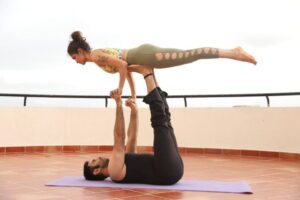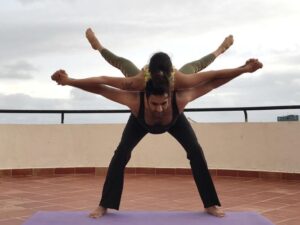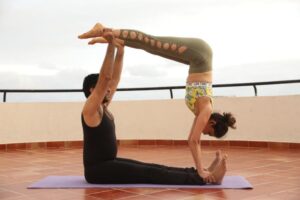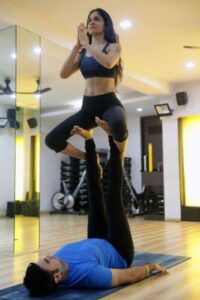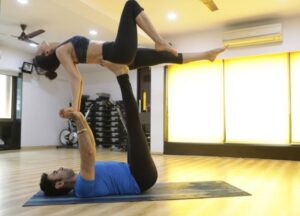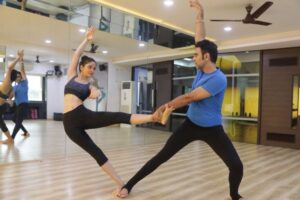Dance and Yoga irrigate Prana, says Fitness Guru Shalini Bhargava
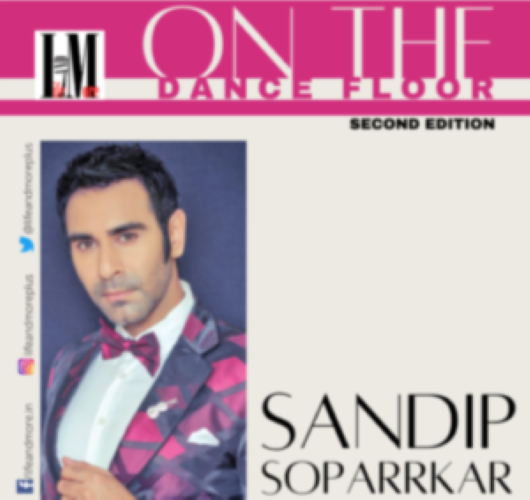
According to Hindu Philosophy Lord Shiva, the source of Yoga, danced the world into existence and gave it order; the universe is thus viewed as Nataraja, the ‘Cosmic Dance of Shiva’. Dance and yoga have long been described as two rivers stemming from the same source (The One). I spoke with Yoga and Fitness guru Shalini Bhargava who is also a Kathak and Ballroom dancer in regards to few interesting aspects of this relationship between Dance and Yoga, Excerpts from the interview:
What is the major link between Dance and Yoga?
In its simplest definitions, yoga and dance can be reduced to breath with movement, or breath-guided movement. This identifies one major link between these two: prana or life-force, as breath. Prana moves both the yogi and the dancer; how to use it, and how to benefit from it. Yogis and dancers use prana as a tool, whereas the large majority of the population might never even notice the breath.
What is the difference?
The major difference between yoga and dance is the focus: we do yoga from a place inside the body and mind and that’s where the focus should stay throughout practice; it’s never about achieving the ‘perfect pose’, or about competition, or wanting to force the body into asana. Dance, on the other hand, has its focus on the outward performance, how the movements look, who is better, and the pressure of all eyes on the dancer.
What are the goals then?
As physical disciplines, both yoga and dance can be suited to specific goals or different levels of ability by modifications in practice pace, intensity, and anatomical focus. For example, dancer might concentrate one day on floor exercises that purposefully open the hip joints in order to achieve better movement; similarly, a restorative yoga class can be suited for those who suffer from hip injuries by focusing on a sequence of hip poses and meditation to open up and heal the hip joints.
What you think is the philosophy?
Both yoga and dance are viewed as “Ways of calling us back into our bodies to irrigate our being with prana”, and in so doing are vehicles for the journey of attainment of samadhi. Some dance traditions are so linked to this self-fulfilling realisation wish that dance has always been an integral part in certain religious rituals, ceremonies and other cultural rites of passage. Sacred dances abound in many religions and usually emphasize the union between man and the earth. Good examples of them are Harvest Dances, Rain Dances, and Fertility Dances.
Many yoga cum dance classes have come up, what do you have to say about them?
Yoga and dance do have an intrinsic bond, and many have recently explored the fusion of yoga and dance when experienced and performed together. Najma Ayash, a Kathak dancer and teacher, ‘Universal Yoga Dance of the Soul’ program is great. She has developed an aesthetic blend of yoga postures and expressions of dances extracting from various dance techniques of Indian temples, depicting ancient rituals and dances of gods and goddesses in relation to the forces of nature. A mystical dance cum exercise dating back to ancient India, Yoga Dance is designed to evoke the sacred temple within us – emphasizing balance and spiritualism in relation to the universal law of nature by transcending the limitations of the physical.
Similarly, Shiva Rea has created ‘Yoga Trance Dance’, where she uses contemporary exploration of the spirit of dance within yoga. As an exploration of freeform consciousness, Yoga Trance Dance aims to use breath-driven movement and rhythmic ambient music as a means to induce meditation; this dynamic moving meditative state (“trance”) promotes the liberation or unleashing of the student’s creative life force.
In a book titled A Yoga of Indian Classical Dance: The Yogini’s Mirror, Kuchipudi dancer Roxanne Gupta tells of her vision for a union of classical Indian dance and yoga, where the two traditions are complementary and essential to one another. Yogic concentration is necessary for exacting the intricate hand gestures, postures and movements of Indian classic dance, and conversely, the esthetics, symmetry and dynamics of dance enhance the practice of yoga. In the book the two great streams of consciousness and practice come together.
Do you think there a coexistence of yoga and dance?
Absolutely yes, Dance and Yoga are natural complements of each other; the flexibility the dancer needs can be achieved with a regular yoga practice. The dynamics and creativity of dance can make a student’s yoga practice more graceful and blissful. A frequent Astanga, Vinyasa, Hatha or any other style of yoga practice has been shown to improve cardio-vascular efficiency, which is the main draw into power yoga – the cardio workout is intense and much more pleasant and meditative than the treadmill.
Yoga also promotes and cultivates the idea of stretching the body in all directions, as in Trikonasana; dancers call this ‘creating your own opposing stretch’, a key concept in strengthening the core muscles as well as perfecting the sense of balance so the dancer is free to move. The reason the yogi doesn’t topple over in Natarajasana is precisely because he knows to always evenly distribute his weight onto his foundation, even if that means the lone foot. The dynamics of the pose require the yogi to enliven and strengthen in all opposing directions: the raised front arm, the back leg and foot pressing into the rear hand, the foot planted on earth and the crown of the head reaching for the sky. This ability to become instantly balanced is optimal for posture and obviously a great asset to the dancer. Yoga also instills a body/mind ‘one-ness’ that is essential for dancers who want to avoid injury by dancing from the inside and remaining focused on their dance at all times.
Sandip Soparrkar holds a doctorate in world mythology folklore from Pacific University USA, an honorary doctorate in performing arts from the National American University, He is a World Book Record holder,
a well-known Ballroom dancer and a Bollywood choreographer who has been honored with three
National Excellence awards, one National Achievement Award and Dada Saheb Phalke award
by the Government of India. He can be contacted on sandipsoparrkar06@gmail.com


